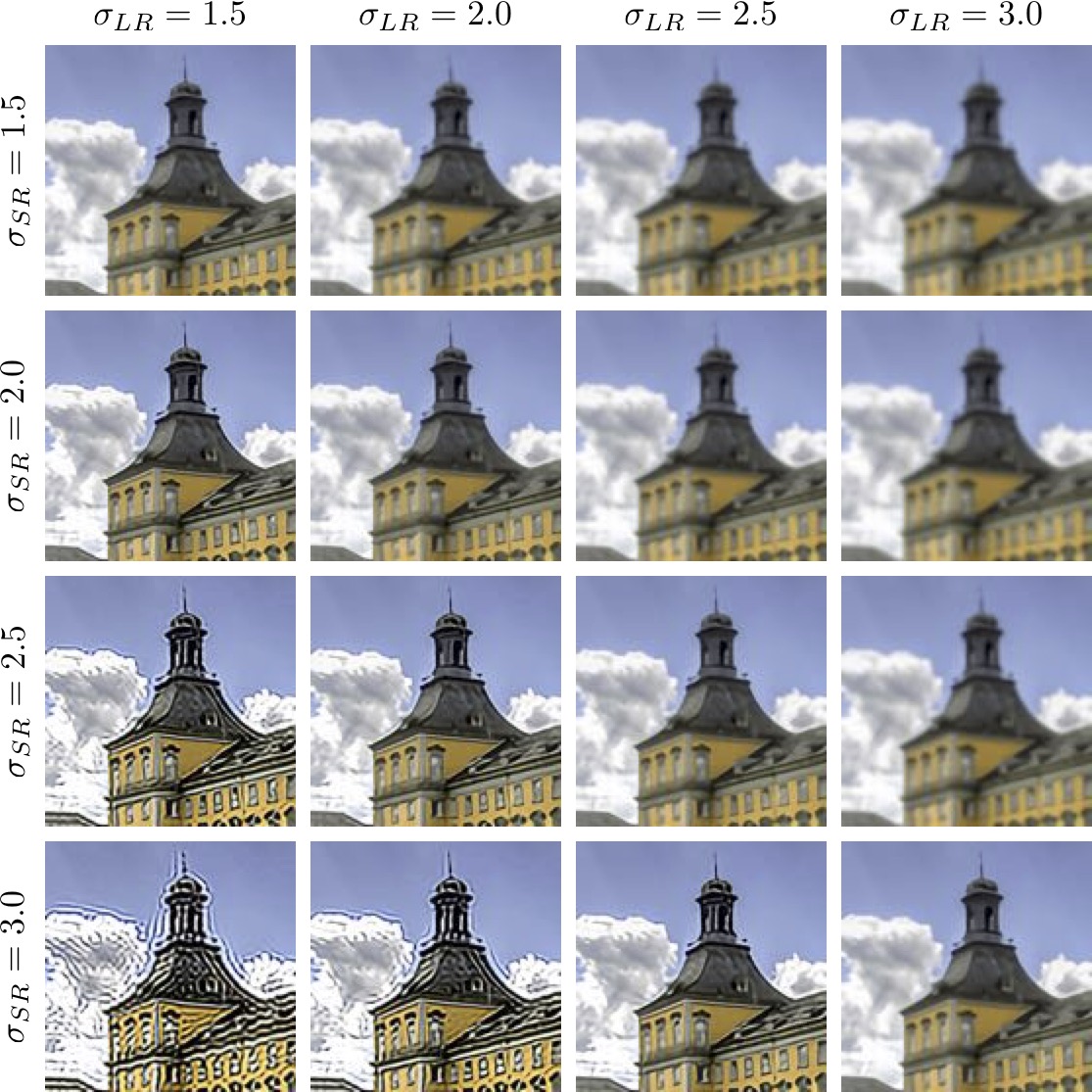Here is the implementation of 'Blind Super-Resolution With Iterative Kernel Correction'.
Based on [BasicSR], [MMSR].
About more details, check BasicSR.
Thanks to Jinjin Gu and Xintao Wang.
[2019-09-22] IKC v0.1 is modified.
[2019-09-25] IKC v0.2 is modified. User could use .yaml to change different settings(scale, sigma, etc.)
- Python 3 (Recommend to use Anaconda)
- PyTorch >= 1.0
- NVIDIA GPU + CUDA
- Python packages:
pip install numpy opencv-python lmdb pyyaml - TensorBoard:
- PyTorch >= 1.1:
pip install tb-nightly future - PyTorch == 1.0:
pip install tensorboardX
- PyTorch >= 1.1:
- Clone this repo:
git clone https://github.com/yuanjunchai/IKC.git
cd IKC- Install PyTorch and dependencies from http://pytorch.org
We use DIV2K, Flickr2K, Set5, Set14, Urban100, BSD100 datasets.
To train a model on the full dataset(DIV2K+Flickr2K, totally 3450 images), download datasets from official websites.
After download, run codes/scripts/generate_mod_LR_bic.py to generate LRblur/LR/HR/Bicubic datasets paths and corresponding kernel map.
python codes/scripts/generate_mod_LR_bic.pyWhen train, dataset_GT is used to produce actual LR and corresponding kernel in train_IKC.py and train_SFTMD.py. Therefore, dataset_LQ is not used.
When test, the operation is the same as above in test_SFTMD.py so as to get kernel maps.
However, you need to change dataset_LQ in test_IKC.py!!
Another method is use generate_mod_LR_bic.py.
You could download the pre-trained models from ./checkpoints directory.
Remember: change opt['path']['pretrain_model_G'] of the .yaml to the models' path you saved.
First, train SFTMD network, and then use pretrained SFTMD to train Predictor and Corrector networks iteratively.
- To train the SFTMD model, change image path of
codes/options/train/train_SFTMD.yml, especially dataroot_GT, dataroot_LQ. You could change opt['name'] to save different checkpoint filenames, and change opt['gpu_ids'] to assign specific GPU.
python codes/train_SFTMD.py -opt_F codes/options/train/train_SFTMD.yml- To train Predictor and Corrector models, you first should change opt_F['sftmd']['path']['pretrain_model_G'] to the path of pretrained SFTMD checkpoint. Also, dataroot_GT, dataroot_LQ of opt_P, opt_C should be filled with corresponding train&validation data paths.
python codes/train_IKC.py -opt_F codes/options/train/train_SFTMD.yml -opt_P codes/options/train/train_Predictor.yml -opt_C codes/options/train/train_Corrector.yml- At first, you'd better run
codes/scripts/generate_mod_LR_bic.pyto generate LRblur/LR/HR/Bicubic datasets paths and corresponding kernel map.
python codes/scripts/generate_mod_LR_bic.py- To test SFTMD model, change test datasets paths of
codes/options/test/test_SFTMD.yml.
python codes/test_SFTMD.py -opt_F codes/options/test/test_SFTMD.yml- To test Predictor and Corrector models, change datasets paths of
codes/options/test/test_Predictor.ymlandcodes/options/test/test_Corrector.yml.
python codes/test_IKC.py -opt_F codes/options/test/test_SFTMD.yml -opt_P codes/options/test/test_Predictor.yml -opt_C codes/options/test/test_Corrector.ymlThe 'dataroot_GT' is only used as PSNR calculation. If you'd like to use it in blind-SR, you could set 'dataroot_GT:~' and just use your own LR data.
@InProceedings{gu2019blind,
author = {Gu, Jinjin and Lu, Hannan and Zuo, Wangmeng and Dong, Chao},
title = {Blind super-resolution with iterative kernel correction},
booktitle = {The IEEE Conference on Computer Vision and Pattern Recognition (CVPR)},
month = {June},
year = {2019}
}

